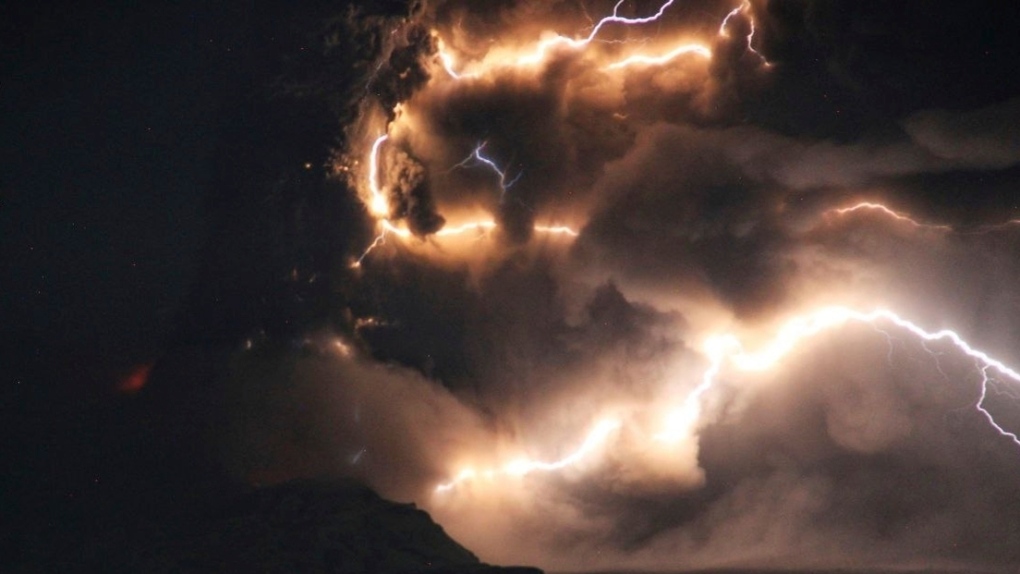A 4.8 magnitude earthquake shook the U.S.Northeast on Friday morning, causing buildings to tremble from Washington, D.C. to New York City to Maine.This earthquake marked the third largest recorded in the area in the past five decades, and the strongest in New Jersey in over 240 years, according to the U.S. Geological Survey (USGS).
The rare seismic event was felt by millions of people across a vast expanse, disrupting daily routines and momentarily causing widespread alarm before life returned to normal. Residents in the Northeast, unaccustomed to earthquakes, were shocked by the sudden tremors. Many initially mistook the shaking for a passing truck or train, only to realize it was something more significant. Despite the widespread fear, authorities reported minimal damage and no injuries, reassuring the public that there was no cause for alarm. Jeanne Evola, a resident of Franklin Square on Long Island, described the intense shaking that rattled her entire house, prompting her to seek safety outside with her neighbors who experienced the same phenomenon. Fortunately, the New York Police Department confirmed no damages or injuries resulting from the earthquake. Following the main quake, there were at least 11 aftershocks recorded in the region, with the latest being a 4.0 magnitude tremor southwest of Gladstone, near the epicenter. The initial earthquake struck at 10:23 a.m., with reports of shaking buildings reaching authorities shortly after. Emergency responders quickly evaluated the structural stability of buildings, finding no major incidents at the time. In the aftermath of the earthquake, New Yorkers found themselves startled by loud emergency alerts on their mobile phones, warning of potential aftershocks. New York Governor Kathy Hochul emphasized the need for continued vigilance, highlighting the unusual nature of earthquakes in the state and urging residents to take necessary precautions. While some parts of the region experienced minor structural issues, such as a water main break in Essex County, New Jersey, and three homes evacuated in Newark due to reported damage, the overall impact of the earthquake was relatively low. Authorities worked to assess and address any concerns, ensuring the safety of residents in affected areas. The earthquake's impact was also felt in the air and on train travel in the Northeast. Flights to major airports such as New York Kennedy, Philadelphia, Baltimore, and Newark were temporarily halted as controllers evacuated air traffic control towers for safety inspections. Similarly, Amtrak reported a temporary slowdown in train services to conduct track inspections, causing some delays but ultimately restoring normal operations by the afternoon. The geological characteristics of the region played a significant role in the earthquake's intensity and reach. The older, denser rocks in the Eastern U.S. are more efficient at transmitting seismic energy, leading to stronger shaking over longer distances compared to the Western U.S. Additionally, the age of buildings in the Northeast leaves them more vulnerable to earthquake damage, especially smaller structures like houses. As residents across the Northeast reflect on their brief encounter with a rare earthquake, they can take comfort in the swift response of authorities and the minimal impact on daily life. The seismic event serves as a reminder of the unpredictable forces of nature and the importance of preparedness in the face of unexpected events.Rare 4.8 Magnitude Earthquake Causes Aftershocks in U.S. Northeast
 5 months ago
2714
5 months ago
2714
- Homepage
- World News
- Rare 4.8 Magnitude Earthquake Causes Aftershocks in U.S. Northeast
Related
Russia experiences volcanic eruption following 7.0 magnitude...
1 month ago
2057
China Metro Stations Buzz with Personalized Ads as Operators...
1 month ago
2014
Accused Mastermind of 9/11 Attacks, Khalid Sheikh Mohammed, ...
1 month ago
2301
Trending in United States of America
Popular
Nokia Reaches 5G Patent Agreement with Vivo After Lengthy Le...
7 months ago
26048
Apple's Upcoming Tablet Lineup: iPad Air to Introduce Two Si...
9 months ago
25976
Xiaomi's First Electric Car, the SU7 Sedan, Enters the EV Ma...
8 months ago
25364
The European Parliament's Bold Move to Combat Smartphone Add...
9 months ago
25312
Unveiling ChatGPT's New 'Memory' Feature Revolutionizing Use...
7 months ago
25212
© OriginSources 2024. All rights are reserved








 English (US)
English (US)